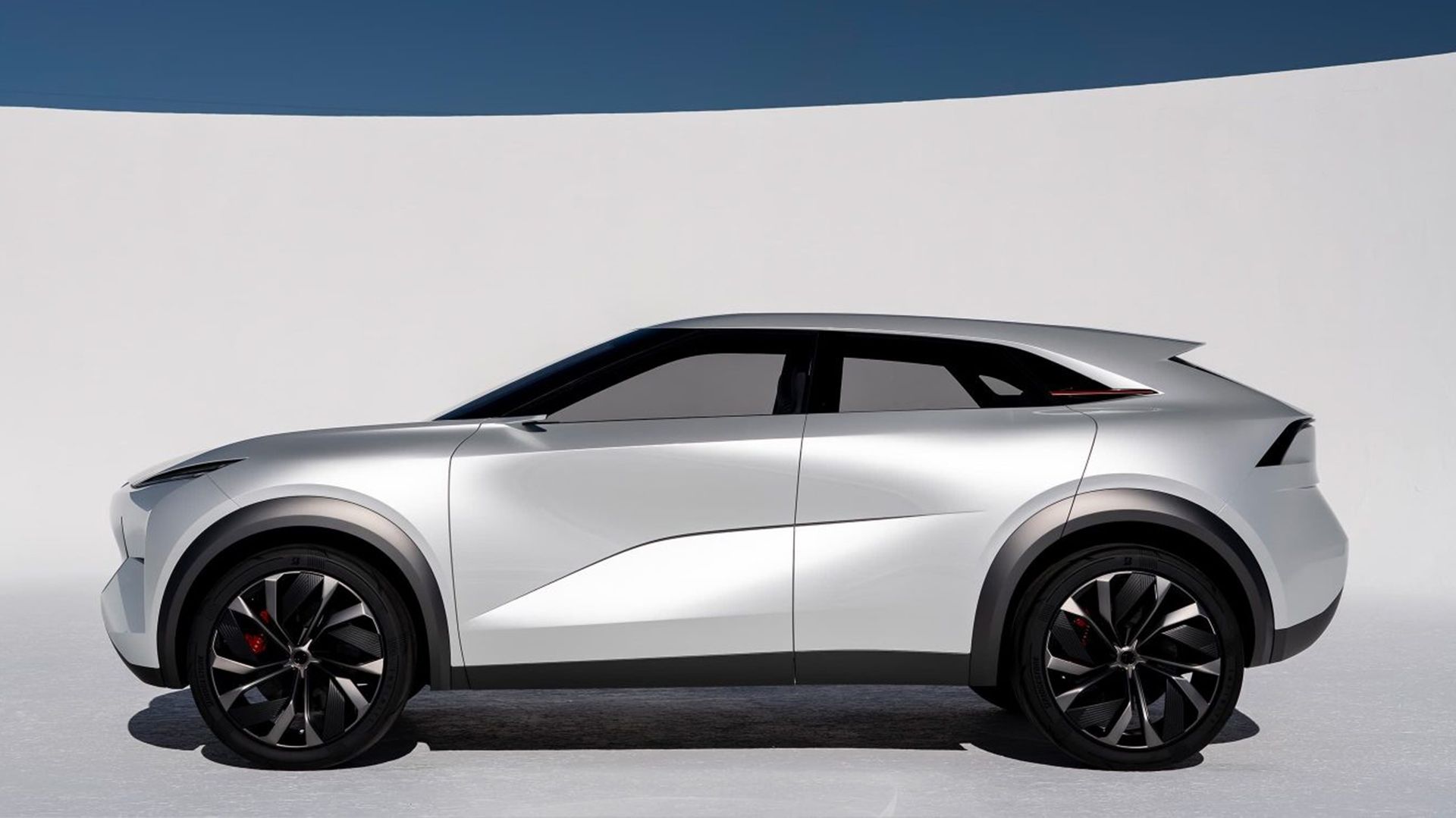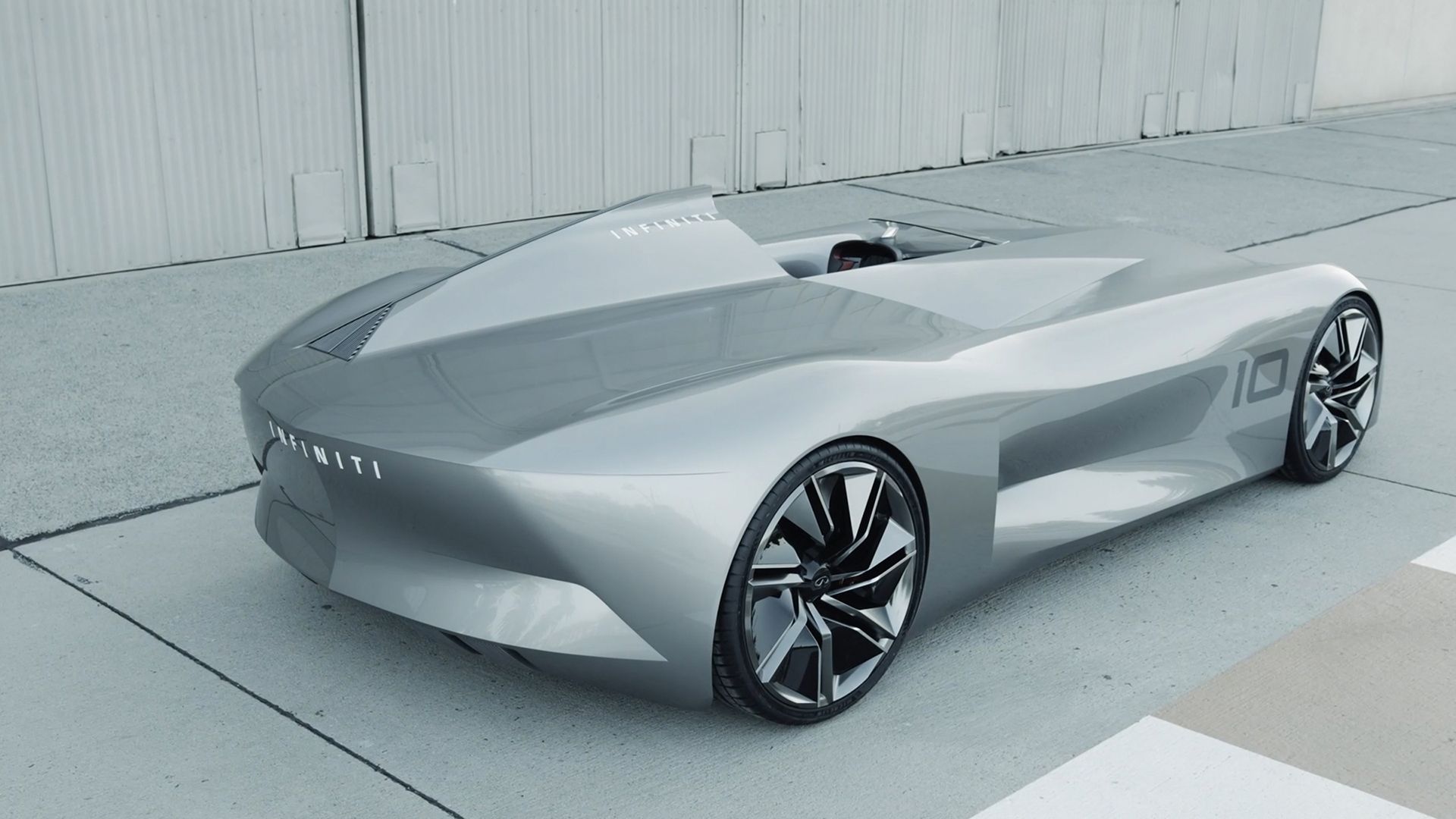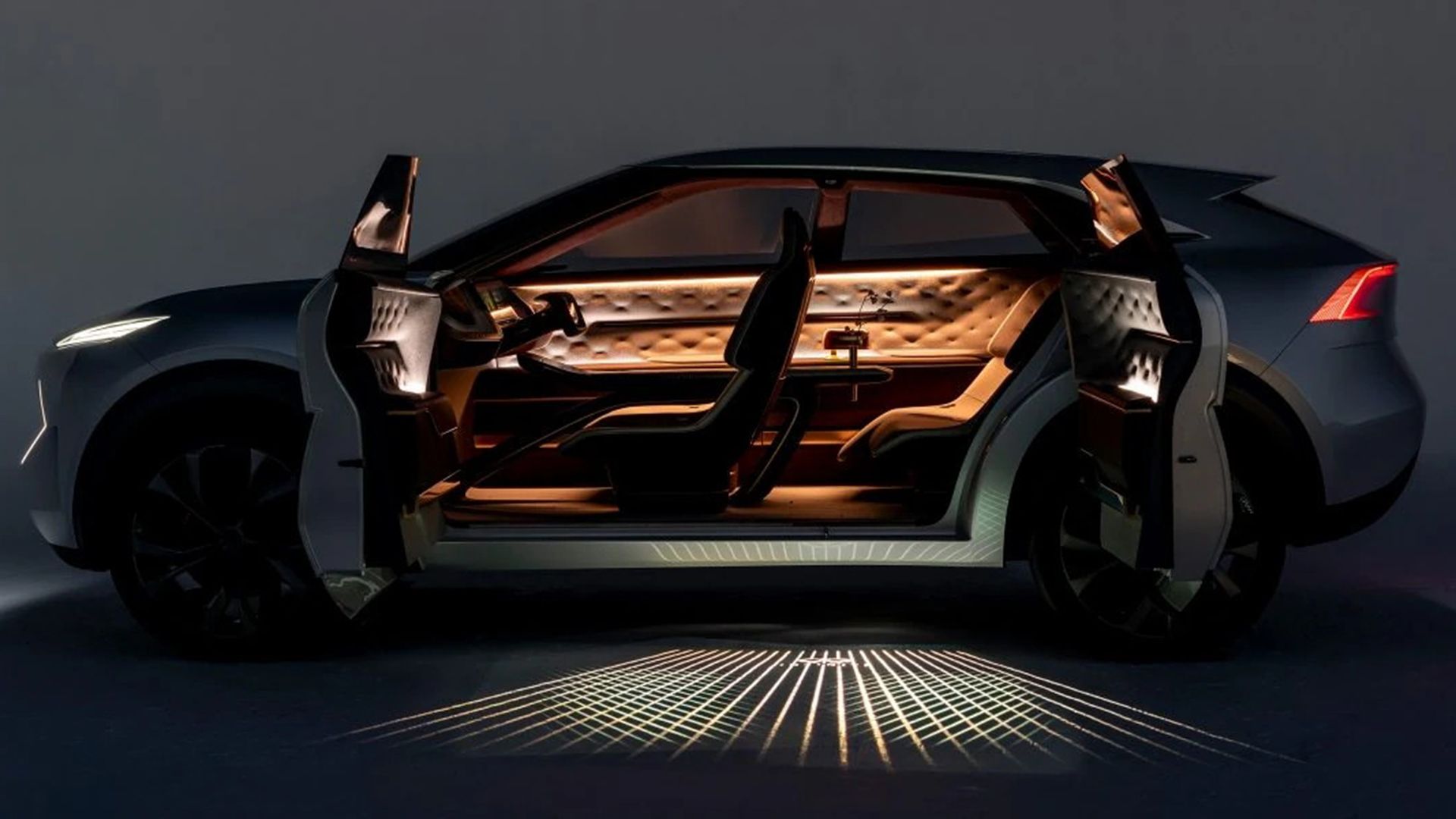Summary
- Nissan’s luxury brand, Infiniti, is finally working on introducing an electric vehicle, having previewed the QS Inspiration concept, set to go into production in 2025.
- The design of the QS Inspiration follows the trend of eliminating the division between the rear window and trunk lid seen in other sedans.
- Another Infiniti electric concept, the SUV QX Inspiration, aims to target the lucrative family-hauling market segment, with its luxury features and practical design.
It took Nissan long enough. Despite thirteen years of experience in EVs, the Japanese automaker has not been willing to sell an EV under its luxury brand. But at long last, the company brought forth the QS Inspiration concept to the 2023 Tokyo Auto Show, which will supposedly reach production in 2025. The QS Inspiration will be manufactured in Nissan’s factory in Canton, Mississippi. Garnering less fanfare is the QX Inspiration concept SUV, which suggests that Nissan intends to introduce a complete lineup of upmarket EVs to its luxury brand rather than a single electric car.
In order to give you the most up-to-date and accurate information possible, the data used to compile this article was sourced from the manufacturer’s website and other authoritative sources, including MotorTrend, and Car and Driver.
The QS Inspiration Is Infiniti’s Electric Sports Sedan
Infiniti’s website proudly proclaims that the QS Inspiration’s designers “reimagined what the sports sedan could look like in the electrified era.” Despite this claim, the company wisely has not made it too groundbreaking. As has been the general trend for the past several years, Nissan has eliminated any division between the rear window and the trunk lid. Fastbacks have long superseded notchbacks, especially as the industry has drifted towards a “sporty” look for sedans.
The Exterior Is Tesla-Inspired
The exterior clearly draws inspiration from Tesla, placing a prominent flat void on the front of the car where the grille proudly isn’t. However, Infiniti’s take on the grille-free prow has a much snazzier light show than Tesla uses. Sharp lines of light outline where the grille would have been, and the name INFINITI is spread across the empty space in large illuminated letters. All the QS Inspiration’s exterior lighting is crisp and sharp, making expressive use of LEDs to create linework effects that could not have been achieved with light bulbs.
The Interior Is Light and Airy
Infiniti’s electric concept sedan features suicide doors, which allow for dramatic photographs of the interior with no inconvenient B pillar interrupting the view. After throwing the doors open, salivating onlookers see slender-profile seats instead of heavy, orthopedic-looking ones. As is required for any luxury car, the seats are covered in leather. Interestingly, the headrests don’t get the same white-leather treatment as the seats themselves. They are instead covered in a rather coarsely-woven cloth.
The door panels and dashboard are covered in swooping two-toned curves. Colored lighting emanates from discreetly placed sources throughout the interior, which makes the car appear to glow from within. All of this, combined with a color scheme that uses light tones instead of somber and “serious” dark grays, gives the interior an overall lightness and airiness. The car suggests pleasure-driving along scenic roads more than angrily trying to out-rev some hypothetical competitors. The interior is unexpectedly reminiscent of Chrysler’s 2006 Imperial concept sedan (especially if you look past Chrysler’s two-toned color scheme).
The Dashboard Is Made Of Carbon Fiber
The concept’s steering wheel is shaped like a horizontally-stretched number 8, resembling the symbol used to represent infinity in science papers. This is clearly meant to be one of the “reimagined” parts of the car. While the steering wheel is visually striking and looks great in photographs, it’s hard to imagine where you would comfortably place your hands. Instead of mechanical instrumentation, the QS Inspiration uses a large screen, the current ultimate in modernity.
The QS Inspiration’s ceiling is glassed-in. Rather than tinting the whole car’s sunroof to reduce glare and driving-induced sunburns, Infiniti has topped the ceiling glass with what the company calls “timber louvers”. These look like what would happen if the rear louvers that were a 1970s and 1980s sports car mainstay were applied to the top of the car instead of the rear window.
The QX Inspiration Is Infiniti’s Electric SUV
Infiniti’s other electric concept is the QX Inspiration SUV. Nissan is clearly designing a paint-by-numbers child-schlepping moneymaker to add to its luxury brand lineup, and that is not a bad thing. Family-hauling vehicles are an ever-lucrative market segment, even if they are disdained by automotive purists. The QX Inspiration would look right at home among all the other upscale SUVs on a private school drop-off line. Like the QS Inspiration sedan, the SUV has suicide doors and a “timber louver” sunroof.
The Interior Draws Some Inspiration From 1980s Styling
Aside from the politely neutral color scheme, the interior is delightfully close to the garish 1980s. The steering wheel is a rectangle, a (perhaps unintentional) nod to the pre-Ford Taurus automotive era, when every surface in a family car was straight and sharp-cornered. The door panels, seats, and dashboard are covered in tufted upholstery, something not seen since the era of vinyl-roofed broughams. Disappointingly, there are no buttons on the tufting. Either Infiniti isn’t courageous enough to fully embrace the button-tufted 1980s, or someone in the design department remembers the irksome task of clearing greasy crumbs and cigarette ashes out of each button-crater in the seats, one by one.
Prototype 10 Is Infiniti’s Electric Sports Car
Infiniti’s other electric concept is less fleshed-out than the sedan and SUV, as is suggested by the fact that its name isn’t an alphanumeric designation that begins with the letter Q. This one-seat open-top vehicle is a traditional enthusiast-targeted sports car. It has an appropriately low ride height (the ascent into any house’s driveway would be perilous), large wheels that barely fit on the side of the car, and promises of horsepower that would seem excessive on a commercial delivery truck (While no specifications have yet been released, the car has a 5-point harness instead of a seat belt). Its most distinctive exterior feature is a large fin-like protrusion that erupts from the hood and divides the front of the car in half from the bumper to the (barely-existent) windshield.
The Unexpectedly Long Wait For An Infiniti Sports Car
Even if the production version of Prototype 10 is more toned-down than the current concept, it’s surprising that Nissan has not already introduced a luxurious and lethal sports car (electric or otherwise) into its upmarket brand. Nissan makes a compelling case for its Nissan Z. Given that luxury cars have long trended away from the Lincoln Town “sofa on wheels” and towards well-upholstered sportiness, it should theoretically be an easy move for Nissan to revise one of its long-successful sports cars to fit the rest of the Infiniti lineup. The company may finally be catching up to where it should have been already.
The Possible Future For Prototype 10
Prototype 10 is the type of car that will almost certainly undergo heavy revision if it reaches production. The current design has a tiny windshield that makes the one on the Polaris Slingshot look like a massive wall of glass. There is no evidence of a convertible roof, nor does the current design have anywhere for it to go when folded away. While Prototype 10 is undoubtedly entertaining to drive (provided the terrain is smooth, flat, and rock-free due to the ground-skimming ride height), it almost looks like a parody of enthusiast-approved sports cars that are designed to be ferried on trailers and never driven.
Nissan Is Finally Letting Infiniti Go Electric
The biggest surprise of Infiniti’s electric lineup is that it took the company so long to come up with a proper EV (“luxury coupes” with beefy powertrains notwithstanding). Nissan is no stranger to the EV market, having first introduced the Leaf in 2010 and followed it up with the Ariya crossover SUV in 2020. While neither of these vehicles are the stuff that racetrack dreams are made of, they nevertheless have proven that Nissan can make competent electric powertrains. They’ve also produced bold concepts that won’t likely go into production, but whatever the reason for the long delay, Nissan is finally electrifying its luxury brand.
Credit: Source link


